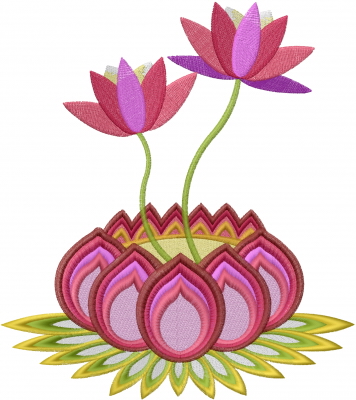My Kannada translation of Vyasa Mahabharata
I have been translating Vyasa Mahabharata from the original Sanskrit Shlokas as in the Critical Edition since 1997 and have completed the translation of the 18 Maha Parvas in 2022. The Harivamsha, which is considered a Khila Bhaga (an Annexure) of Mahabharata, is under translation.
The Mahabharata is divided into 18 Maha Parvas and one annexure.
- Adi Parva

- Sabha Parva

- Aranyaka Parva

- Virata Parva

- Udyoga Parva

- Bhishma Parva

- Drona Parva

- Karna Parva

- Shalya Parva

- Sauptika Parva

- Stri Parva

- Shanti Parva


- Anushasana Parva

- Ashwamedhika Parva

- Ashramavasika Parva

- Mausala Parva

- Mahaprasthana Parva

- Swargarohana Parva

- Khila Bhaga: Harivamsha
Sanskrit manuscript used in this Kannada translation
The present translation is based on the Critical Edition of Mahabharata completed in 1970, by the Bhandarkar Oriental Research Institute at Pune.
There are many different versions or recensions of Mahabharata. These recensions relate to either a certain region or the text as given by a certain commentator. Prior to the Critical Edition, there were four principal recensions of Mahabharata:
- The Calcutta edition - based on the Bengal recension of the text completed in 1839
- The Bombay edition - largely based on the recension in Devanagari script, also known as Nilakantha edition, completed in 1863
- The Kumbhakonam edition - also based on the Devanagari script, completed in 1910, which incorporates the Southern recension
- The Mahabharata: The Southern Recension, edited by P.P.S. Sastri, completed in 1935.
As expected, there were serious variations between the several traditions. Like many ancient Sanskrit texts, Mahabharata was transmitted across generations verbally, a practice that was a source of corruption of its text, deletion of verses as well as the addition of extraneous verses over time. Some of these suspect verses have been identified by change in style and integrity of meter in the verses. In 1897, the Viennese scholar Moriz Winternitz called on his fellow-Indologists to work toward a definitive text to facilitate any definitive study. Many of his colleagues were skeptical about the possibility of constituting an all-India edition of the epic. Despite the doubt, with the help of the Berlin, Vienna and Gottingen academies, Heinrich Luders prepared a sample fascicle in 1908. But the first World War brought the work to a complete halt.
In 1918, however, V.S. Sukthankar, a pupil of Winternitz's, and the then Director of the Bhandarkar Oriental Research Institute at Pune, initiated a critical edition. A large number of manuscripts were collected, collated, and calibrated. In this critical edition, predominance is given to the manuscripts originating from distant and conservative Kashmir.
Source: The Mahabharata: The Book of the Beginnings, Translated and Edited by J.A.B. van Buitenen, University of Chicago Press, Chicago and London, 1973.

ಈ ಕನ್ನಡ ಅನುವಾದಕ್ಕೆ ಬಳಸಿರುವ ಮೂಲ ಮಹಾಭಾರತದ ಸಂಸ್ಕೃತ ಪಾಠ
ಈ ಅನುವಾದಕ್ಕೆ ಮುಖ್ಯವಾಗಿ ಪುಣೆಯ ಭಂಡಾರ್ಕರ್ ಪ್ರಾಚ್ಯ ಸಂಶೋಧನ ಸಂಸ್ಥೆಯು ೧೯೭೦ರಲ್ಲಿ ಪೂರ್ಣಗೊಳಿಸಿದ ಮಹಾಭಾರತದ ವಿಮರ್ಶಾತ್ಮಕ ಆವೃತ್ತಿಯನ್ನು ಬಳಸಲಾಗಿದೆ.
ವ್ಯಾಸಕೃತವೆಂದೆಸಿಕೊಂಡಿರುವ ಮೂಲ ಸಂಸ್ಕೃತ ಮಹಾಭಾರತದ ಹಲವಾರು ಬೇರೆ ಬೇರೆ ಪಾಠಗಳಿವೆ. ಈ ಪಾಠಗಳು ನಿರ್ದಿಷ್ಟವಾದ ಒಂದು ಪ್ರದೇಶದಲ್ಲಿ ದೊರಕಿರುವ ಹಸ್ತಪ್ರತಿಗಳಾಗಿರಬಹುದು ಅಥವಾ ನಿರ್ದಿಷ್ಟ ವ್ಯಾಖ್ಯಾನಕಾರನು ಬಳಸಿರುವ ಪಾಠವಾಗಿರಬಹುದು. ವಿಮರ್ಶಾತ್ಮಕ ಆವೃತ್ತಿಯು ಬರುವ ಮೊದಲು ಮಹಾಭಾರತದ ನಾಲ್ಕು ಮುಖ್ಯ ಪಾಠಗಳಿದ್ದವು:
- ಕಲ್ಕತ್ತಾದ ಮಹಾಭಾರತ ಪಾಠ – ೧೮೩೯ ರಲ್ಲಿ ಪೂರ್ಣಗೊಂಡ ಬಂಗಾಲೀ ಪಾಠ
- ಬಾಂಬೇ ಪಾಠ – ದೇವನಾಗರೀ ಲಿಪಿಯಲ್ಲಿದ್ದ ನೀಲಕಂಠ ಪಾಠ, ೧೮೬೩ರಲ್ಲಿ ಪ್ರಕಾಶಗೊಂಡಿದುದು
- ಕುಂಭಕೋಣ ಪಾಠ – ದೇವನಾಗರೀ ಲಿಪಿಯಲ್ಲಿದ್ದ ದಕ್ಷಿಣಾತ್ಯ ಪಾಠ, ೧೯೧೦ರಲ್ಲಿ ಪ್ರಕಾಶಗೊಂಡಿದುದು
- ಪಿ.ಪಿ.ಎಸ್. ಶಾಸ್ತ್ರಿಗಳು ೧೯೩೫ರಲ್ಲಿ ಪ್ರಕಾಶಿಸಿದ ದಕ್ಷಿಣಾತ್ಯ ಪಾಠ.
ಈ ಪಾಠಗಳ ನಡುವೆ ಬಹಳಷ್ಟು ಗಂಭೀರ ವ್ಯತ್ಯಾಸಗಳಿದ್ದವು. ಇತರ ಪುರಾತನ ಸಂಸ್ಕೃತ ಕೃತಿಗಳಂತೆ ಮಹಾಭಾರತವೂ ಕೂಡ ಸಾವಿರಾರು ವರ್ಷಗಳಿಂದ ಒಂದು ತಲೆಮಾರಿನಿಂದ ಇನ್ನೊಂದು ತಲೆಮಾರಿಗೆ, ಬಾಯಿಪಾಠದ ಮುಖಾಂತರ, ಉಳಿಸಿಕೊಂಡು ಬಂದಿದುರಿಂದ, ಮೂಲ ಪಾಠಗಳಲ್ಲಿ ಹಲವಾರು ವಂಚನೆಗಳಾಗಿದ್ದಿರಬಹುದು – ಕೆಲವು ಶ್ಲೋಕಗಳು ಕೆಲವು ಪಾಠಗಳಿಂದ ಬಿಟ್ಟುಹೋಗಿರಬಹುದು, ಅಥವಾ ಕೆಲವು ಪಾಠಗಳು ಕೆಲವು ಶ್ಲೋಕಗಳನ್ನು ಹೊಸತಾಗಿ ಸೇರಿಸಿಕೊಂಡು ಬಂದಿರಬಹುದು. ಇಂತಹ ಹಲವಾರು ಶ್ಲೋಕಗಳನ್ನು ಅವುಗಳ ದಾಟಿ, ಛಂದಸ್ಸು, ಶೈಲಿ ಮತ್ತು ಕೃತಿಗೆ ಒಟ್ಟಾರೆ ತಾರತಮ್ಯವನ್ನು ತರುವ ರೀತಿ ಇವುಗಳ ಆಧಾರದ ಮೇಲೆ ಗುರಿತಿಸಬಹುದು. ಹೀಗಾಗಿ ವಿದ್ವತ್ಪೂರ್ಣ ಅಧ್ಯಯನ-ಸಂಶೋಧನೆಗಳ ದೃಷ್ಟಿಯಿಂದ ಮಹಾಭಾರತದ ಪಾಠನಿಷ್ಕರ್ಷೆ ಮಾಡುವುದು ಮೊಟ್ಟಮೊದಲ ಅಗತ್ಯ ಎಂದು ಪ್ರೊಫೆಸರ್ ಮೋರಿಝ್ ವಿಂಟರ್ನಿಟ್ಜ್ ೧೮೯೭ರಲ್ಲಿ ಗುರುತಿಸಿ, ಒಂದು ನಿರ್ದಿಷ್ಟ ಮೂಲ ಭಾರತ ಪಾಠವನ್ನು ತರಬೇಕೆಂದು ಭಾರತೀಯ ಅಧ್ಯಯನಶೀಲರಿಗೆ ಕರೆನೀಡಿದನು. ಆದರೆ ಅವನ ಹಲವಾರು ಸಹೋದ್ಯೋಗಿಗಳು ಅಂಥಹ ನಿರ್ದಿಷ್ಟ ಪಾಠವನ್ನು ಗುರುತಿಸುವುದು ಅಸಾಧ್ಯ ಎಂದು ಕೈಬಿಟ್ಟಿದ್ದರು. ಈ ರೀತಿ ಸಂಶಯಗಳಿದ್ದರೂ, ೧೯೦೮ರಲ್ಲಿ ಬರ್ಲಿನ್, ವಿಯೆನ್ನಾ ಮತ್ತು ಗೋಟ್ಟಿಂಜೆನ್ ವಿದ್ಯಾಲಯಗಳ ಸಹಯೋಗದಿಂದ ಹೀನ್ರಿಕ್ ಲ್ಯೂಡರ್ಸ್ ಒಂದು ವಿಮರ್ಶಾತ್ಮಕ ಆವೃತ್ತಿಯ ಮಾದರ್ರಿಯೊಂದನ್ನು ಸಿದ್ಧಪಡಿಸಿದನು. ಆದರೆ ಮೊದಲನೆಯ ವಿಶ್ವಯುದ್ಧವು ಈ ಪ್ರಯತ್ನಕ್ಕೆ ಸಂಪೂರ್ಣ ವಿರಾಮವನ್ನೇ ಹಾಕಿತು.
ಆದರೆ, ೧೯೧೮ರಲ್ಲಿ ವಿಂಟಿರ್ನಿಟ್ಜನ ಶಿಷ್ಯ ವಿ.ಎಸ್.ಸುಕ್ತಾಂಕರ್, ಭಂಡಾರ್ಕರ್ ಪ್ರಾಚ್ಯ ಸಂಶೋಧನಾ ಸಂಸ್ಥೆಯ ನಿರ್ದೇಶಕರಾಗಿದ್ದಾಗ, ವಿಮರ್ಶಾತ್ಮಕ ಆವೃತ್ತಿಯ ಯೋಜನೆಯನ್ನು ಕೈಗೊಂಡರು. ಹಲವಾರು ಹಸ್ತಪ್ರತಿಗಳನ್ನು ಒಟ್ಟುಗೂಡಿಸಲಾಯಿತು, ಪರಿಶೀಲಿಸಲಾಯಿತು ಮತ್ತು ಸರಿಜೋಡಿಸಲಾಯಿತು. ಈ ವಿಮರ್ಶಾತ್ಮಕ ಆವೃತ್ತಿಯಲ್ಲಿ ದೂರಪ್ರದೇಶವಾದ ಮತ್ತು ಸಾಂಪ್ರದಾಯಿಕವಾದ ಕಾಶ್ಮೀರದಲ್ಲಿ ದೊರಕಿರುವ ಹಸ್ತಪ್ರತಿಗೇ ಹೆಚ್ಚಿನ ಪ್ರಾಧಾನ್ಯತೆ ನೀಡಲಾಗಿದೆ.
ಆದರೆ ಈ ವಿಮರ್ಶಾತ್ಮಕ ಆವೃತ್ತಿಯಲ್ಲಿ ಕೆಲವೊಮ್ಮೆ ಪ್ರಸಂಗಗಳು ಇದ್ದಕಿದ್ದಂತೆಯೇ ಕೊನೆಗೊಂಡು ಬಿಡುತ್ತವೆ. ಹೀಗಾಗಿ ಹಿಂದಿನ ಮತ್ತು ಮುಂದಿನ ಪ್ರಸಂಗಗಳ ನಡುವೆ ಸಾವಯವ ಸಂಬಂಧ ಏರ್ಪಡುವುದಿಲ್ಲ. ಕೆಲವೊಮ್ಮೆ ಕಥೆಯ ನಡೆಯ ದೃಷ್ಟಿಯಿಂದ ಮುಖ್ಯವಾಗಿರುವ ಭಾಗವೇ ಕಣ್ಮರೆಯಾಗಿ ಬಿಟ್ಟಿರುವುದುಂಟು (ಉದಾಹರಣೆಗೆ: ಪಾಂಡುವಿನ ಜನ್ಮವೃತ್ತಾಂತ). ಸೂಚಿತವಾಗಿರುವ ಪಾಠವನ್ನಿಟ್ಟುಕೊಂಡು ಸಂಗತವಾದ ಅರ್ಥವನ್ನು ನಿರೂಪಿಸಲು ಸಾಧ್ಯವಾಗದೇ ಹೋಗುತ್ತದೆ. ಕೆಲವೊಮ್ಮೆ ಅಂಗೀಕೃತವಾದ ಪಾಠ ಅಪ್ರಕೃತವಾಗುತ್ತದೆ (ಉದಾ: ದ್ರೌಪದಿಯನ್ನು ಶಚಿಯ ಅಂಶವೆನ್ನುವುದಕ್ಕೆ ಬದಲಾಗಿ ಲಕ್ಷ್ಮಿಯ ಅಂಶವೆಂಬ, ಇತ್ತ ರುಕ್ಮಿಣಿಯನ್ನು ಶಚಿಯ ಅಂಶವೆಂಬ ಪಾಠಗಳನ್ನು ಅಂಗೀಕರಿಸಿರುವುದು). ಇದರಿಂದ ನಾವು ಗಟ್ಟಿಯೆಂದು ಅಥವಾ ಮೂಲ ಮಹಾಭಾರತದ ಭಾಗವೆಂದು ಭಾವಿಸಿದ್ದ ಅನೇಕ ಭಾಗಗಳು, ಉದಾಹರಣೆಗೆ: ಗಣೇಶನು ವ್ಯಾಸನಿಗೆ ಲಿಪಿಕಾರನಾದ ಪ್ರಸಂಗ, ಸ್ವಯಂವರ ಸಂದರ್ಭದಲ್ಲಿ ಸೂತಪುತ್ರ ಕರ್ಣನನ್ನು ತಾನು ವರಿಸುವುದಿಲ್ಲವೆಂದು ಹೇಳಿ ದ್ರೌಪದಿಯು ಕರ್ಣನ ತೇಜೋಭಂಗಮಾಡುವುದು, ಅಕ್ಷಯ ವಸ್ತ್ರ ಹಾಗೂ ಅಕ್ಷಯ ಪಾತ್ರೆಯ ಪ್ರಸಂಗಗಳು, ಅರ್ಜುನನನ್ನು ಊರ್ವಶಿಯು ಶಪಿಸಿದ ಪ್ರಸಂಗ - ಇತ್ಯಾದಿಗಳನ್ನು ಪ್ರಕ್ಷೇಪಗಳೆಂದು ತೆಗೆದುಹಾಕಿದಿದು ಗಮನಾರ್ಹ.
ಈ ಅನುವಾದದಲ್ಲಿ ಸಾಧ್ಯವಾದಷ್ಟು, ಈ ರೀತಿ ಬಿಟ್ಟುಹೋದ ಪ್ರಸಂಗಗಳನ್ನೂ, ಪ್ರಸಂಗಗಳ ನಡುವಿನ ಕೊಂಡಿಗಳನ್ನೂ ಟಿಪ್ಪಣಿಗಳು ಮತ್ತು ಪರಿಶಿಷ್ಟಗಳ ಮೂಲಕ, ಪುಣೆಯ ವಿಮರ್ಶಾತ್ಮಕ ಆವೃತ್ತಿಯಲ್ಲಿ ಇರದ ಔತ್ತರೀಯ ಮತ್ತು ದಕ್ಷಿಣಾತ್ಯ ಪಾಠಗಳ ಶ್ಲೋಕಗಳನ್ನು ಅನುವಾದ ಸಹಿತ ನೀಡಿದ್ದೇನೆ.
